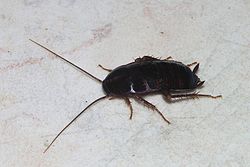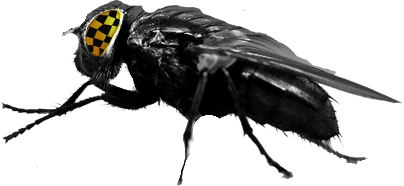Cockroaches Gold Coast Pest Control 27 Jan 2015
 One insect that is very much disliked and found all over the world is the cockroach. Unbelievably there are more than 3,500 species! The “roach” is believed to spread a range of diseases to humans including salmonella and gastroenteritis because of the wide range of foods they eat including rotting garbage from bins. They will eat basically anything, ranging from dropped food on the floor to faecal matter. Any ingested bacteria survives in the cockroach's digestive tract for months or sometimes even years and gets passed on in their droppings. Cockroaches vomit & defecate on food and it’s believed that diseases perhaps are transmitted to humans when we eat the food that has been contaminated. Recent studies have even indicated that cockroaches may also be the cause of some allergies.
One insect that is very much disliked and found all over the world is the cockroach. Unbelievably there are more than 3,500 species! The “roach” is believed to spread a range of diseases to humans including salmonella and gastroenteritis because of the wide range of foods they eat including rotting garbage from bins. They will eat basically anything, ranging from dropped food on the floor to faecal matter. Any ingested bacteria survives in the cockroach's digestive tract for months or sometimes even years and gets passed on in their droppings. Cockroaches vomit & defecate on food and it’s believed that diseases perhaps are transmitted to humans when we eat the food that has been contaminated. Recent studies have even indicated that cockroaches may also be the cause of some allergies.
The commonest varieties in Australia are the ‘German’, ‘Oriental’ and ‘American’ cockroaches. German cockroaches are the smaller, brown ones. Oriental cockroaches are medium sized, dark brown to black in colour whilst the American cockroaches are the large, black ones.
A cockroach infestation can be very successfully treated with the partnership of good hygiene practices in and around the home and professional pest control.
Although you can attempt to treat an infestation yourself, Pestrid Pest Control can guarantee they will eradicate these little unwanted pests from your home and life!
Life cycle
Cockroaches are cold-blooded and absolutely thrive in warm and humid conditions. This makes the Gold Coast a perfect breeding ground for them and dependant on the conditions and which type of cockroach, they can live for up to 12 months.
A female cockroach will lay between 10-40 eggs at once with the average amount of batches in her lifetime being around 30. The hatched young look the same as adult cockroaches only smaller and are unable to fly as they have no wings yet.
Where do they live in your house?
Cockroaches like to hangout in your kitchen hoping they can feed off dropped food and food littered benchtops and they also like to have access to water.
You will find them in wall cracks, underneath sinks, around water heaters, in your kitchen cupboards and pantry, behind your refrigerator or underneath piles of magazines and cardboard boxes just to name a few.
What to do to get rid of them
- Clean your home at least once a week paying particular attention to the kitchen and other food prep areas.
- Clean up benchtops and any dropped food.
- Store your food in airtight, sealed containers.
- Clean regularly underneath the fridge and stove, not forgetting your toaster and other benchtop appliances.
- Do not leave your pet’s food sitting in bowls.
- Empty your bins frequently.
- Be sure there are no sources of water such as a leak under your sink because “roaches” need water for survival.
- Repair any holes, cracks and gaps in your walls, skirting boards and inside your cupboards.
- Don't accumulate piles of newspapers, magazines or cardboard boxes anywhere in or around the house.
- Keep compost bins and heaps well away from your house.


